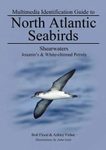Call us (08:30-16:00 UK)
+44 (0) 1803 86 59 13International
+44 (0) 1803 86 59 13Brauchen Sie Hilfe?
HilfeWichtiger Hinweis für Kundinnen und Kunden aus den USA
Datenerfassung und Monitoring
- Aquatic Survey & Monitoring
- Professional Hand & Kick Nets
- Water Testing
- Waders & Aquatic Safety
- View All
- Amphibian & Reptile Survey
- Amphibian Survey & Monitoring
- Reptile Survey & Monitoring
- Scales, Balances & Holding Bags
- View All
Feldführer und Naturgeschichte
Akademische und professionelle Bücher
- Evolutionary Biology
- Evolution
- Human Evolution & Anthropology
- Cladistics, Phylogeny & Taxonomy
- View All
British Wildlife
British Wildlife is the leading natural history magazine in the UK, providing essential reading for both enthusiast and professional naturalists and wildlife conservationists. Published eight times a year, British Wildlife bridges the gap between popular writing and scientific literature through a combination of long-form articles, regular columns and reports, book reviews and letters.
Conservation Land Management
Conservation Land Management (CLM) ist ein Mitgliedermagazin und erscheint viermal im Jahr. Das Magazin gilt allgemein als unverzichtbare Lektüre für alle Personen, die sich aktiv für das Landmanagement in Großbritannien einsetzen. CLM enthält Artikel in Langform, Veranstaltungslisten, Buchempfehlungen, neue Produktinformationen und Berichte über Konferenzen und Vorträge.















![Ferrantia, Volume 78: Verbreitungsatlas der Reptilien des Großherzogtums Luxemburg [Distribution Atlas of the Reptiles of the Grand Duchy of Luxembourg]](http://mediacdn.nhbs.com/jackets/jackets_resizer_medium/24/242444.jpg?height=150&width=106)
![Ferrantia, Volume 73: Beiträge zur Paläontologie des Unterdevons Luxemburgs, Volume 4 [Contribution to the Palaeontology of the Lower Devonian of Luxembourg, Volume 4]](http://mediacdn.nhbs.com/jackets/jackets_resizer_medium/23/231481.jpg?height=150&width=106)
![Ferrantia, Volume 68: Beiträge zur Paläontologie des Unterdevons Luxemburgs, Volume 3 [Contribution to the Palaeontology of the Lower Devonian of Luxembourg, Volume 3]](http://mediacdn.nhbs.com/jackets/jackets_resizer_medium/21/215099.jpg?height=150&width=106)
![Ferrantia, Volume 63: La Flore Calcicole et Basophile du Massif Vosgien [The Calcicole and Basophile Flora of the Vosges Massif]](http://mediacdn.nhbs.com/jackets/jackets_resizer_medium/21/215136.jpg?height=150&width=106)
![Ferrantia, Volume 25: Atlas des Ptéridophytes des Régions Lorraines et Vosgiennes, avec les Territoire Adjacents [Atlas of the Pteridophytes of the Lorraine and Vosges Regions, with Adjacent Territories]](http://mediacdn.nhbs.com/jackets/jackets_resizer_medium/21/215223.jpg?height=150&width=104)


![Ferrantia, Volume 40: Les Macrolichens de Belgique, du Luxembourg et du Nord de la France: Clés de Détermination [The Macro Lichens of Belgium, Luxembourg and the North of France: Identification Keys]](http://mediacdn.nhbs.com/jackets/jackets_resizer_medium/21/215208.jpg?height=150&width=106)
![Ferrantia, Volume 75: Verbreitungsatlas der Amphibien des Großherzogtums Luxemburg [Distribution Atlas of the Amphibians of the Grand Duchy of Luxembourg]](http://mediacdn.nhbs.com/jackets/jackets_resizer_medium/23/233252.jpg?height=150&width=106)
![Ferrantia, Volume 61: Verbreitung der Zikaden des Großherzogtums Luxemburg: Atlasband [Distribution of Cicads in the Grand Duchy of Luxembourg: Atlas Volume]](http://mediacdn.nhbs.com/jackets/jackets_resizer_medium/21/215141.jpg?height=150&width=106)
![Ferrantia, Volume 47: Verbreitungsatlas der Libellen des Großherzogtums Luxemburg [Distribution Atlas of the Dragonflies of the Grand Duchy of Luxembourg]](http://mediacdn.nhbs.com/jackets/jackets_resizer_medium/21/215197.jpg?height=150&width=106)
![Ferrantia, Volume 33: Die Fledermäuse Luxemburgs (Mammalia: Chiroptera) [The Bats of Luxembourg]](http://mediacdn.nhbs.com/jackets/jackets_resizer_medium/21/215215.jpg?height=150&width=106)














![Ferrantia, Volume 86: Beobachtungen zur Entwicklung der Wasservogelwelt nach der Renaturierung der Sauer unterhalb von Steinheim [Observations on the Development of Waterfowl after the Ecological Restoration of the Sauer below Steinheim]](http://mediacdn.nhbs.com/jackets/jackets_resizer_medium/26/265043.jpg?height=150&width=106)

![Ferrantia, Volume 84: Atlas des Fourmis Luxembourgeoises (Hymenoptera, Formicidae) [Atlas of Luxembourg Ants]](http://mediacdn.nhbs.com/jackets/jackets_resizer_medium/26/265002.jpg?height=150&width=106)
![Ferrantia, Volume 70: Verbreitungsatlas der Weberknechte des Großherzogtums Luxemburg [Distribution Atlas of the Harvestmen of the Grand Duchy of Luxembourg]](http://mediacdn.nhbs.com/jackets/jackets_resizer_medium/21/214555.jpg?height=150&width=106)